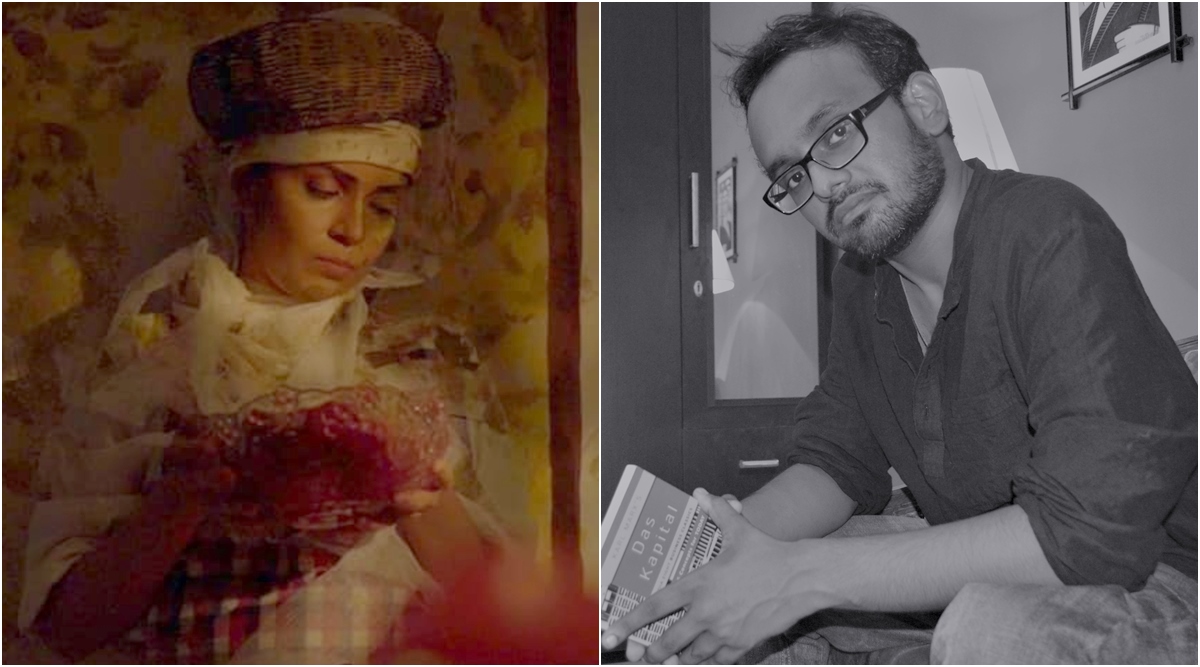Director Aneek Chaudhuri on how his silent film Cactus, which released recently on Amazon Prime Video, shows a female Christ and doesn't challenge Christianity.
Paris Jackson wouldn’t have anticipated that 300,000 people and counting would petition to block the release of the film Habit where the American actor and pop star Michael Jackson’s daughter plays a female Jesus – allegedly lesbian. Earlier this year, a judge in Brazil ruled that Netflix needed to remove the parody, The First Temptation of Christ, which depicts Jesus as gay. The ban, however, was overturned. Even Martin Scorsese had to embrace adjectives like “heretic”, “incendiary”, “plain disgusting”, and his catholicity questioned, for making The Last Temptation of Christ (1988). In artistic expressions – with room for multiple interpretations – one wonders why the Western imagination has stuck to a blond-haired, blue-eyed white man in robes when Jesus is an Asian, born in Palestine?
Closer home, Aneek Chaudhuri hasn’t shared Paris’s fate but did receive his fraction of disapproval for his film, Cactus, wherein he presents Jesus as a woman. Last year, at Cannes Film Festival’s Marche du Film (MDF), it was picked up by Amazon Prime Video, and recently released on the OTT in the US and the UK. While Amazon Prime Video India is yet to respond on whether or not it will release it here, Indians can watch it on Vimeo for now.
Circularity of a cucumber/orange slice is juxtaposed with an iris-pupil – the film seeks to ask whether what you see is how you were meant to see it? The pace is unhurried, progression non-linear. The feature-length silent film, mostly in black-and-white, straddles three eras: before Christ, Anno Domini, and after death. Jesus is in the inanimate – the doll as baby Jesus in the arms of a 12-year-old Mother Mary and resurrected in the older mother’s arms, or frozen in a painting – and animate. The older Jesus wrapped in strips of negatives, and in deadpan melancholia, sees against the light a past – unseen and undeveloped.
There’s still life, static frames, and moving subjects. The frozen Jesus of the frame wakes up from a dream, steps out to serve pomegranate juice – symbolic of Christ’s blood – in 12 glasses, standing in for the 12 disciples, revealing a sketch on the frame of a seated Mother Mary holding a bloodied woman (Jesus) in a reimagining of Michelangelo Buonarroti’s sculpture, Pietà. The intertextuality in the film – now part of MOMA’s video library and the Oscars Academy Film Archives – is not from the Bible but from two late 15th century Renaissance works – Pietà and Leonardo da Vinci’s The Last Supper.
Words disrupt, says the director who’d “rather paint with the camera”. “Filmmakers often use paintings to shape or enrich the meaning of their works. The history of art is in film,” writes Angela Dalle Vacche in her book Cinema and Painting: How Art is Used in Film (1996), “By blurring the distinction between high art and popular culture, cinema has always…challenged…the whole system of the arts, thus disclosing the possibility of new configurations, hierarchies, alliances, and hostilities.” What Dalle Vacche notes about Michelangelo Antonioni in Red Desert (1964), Chaudhuri does in his film, too. He “aligns painting with a feminine vision at odds with the values of rationality…open to inner rebirth and new avenues of self-expression.” For the role, Chaudhuri told Aparajita Dey, a National School of Drama graduate who’s acted in Priyanka Chopra-starrer The Sky Is Pink (2019), to “keep herself in solitude”.
His “artistic interpretation” – of seeing Jesus’s “sensitivity” as something that women possess – has riled up some. A message he received said, “As Jesus was part of history and known to all as a strong male, this is like making a movie about your grandfather saying he was a woman and wore dresses.” Chaudhuri, 28, says he’s not rebelling “against established norms”. The past has stood witness to how “artistic interpretations” rankle – from MF Husain’s goddess paintings, Prophet’s cartoon by French publisher Charlie Hebdo, to the original title of S Durga (Sanal Sasidharan’s 2017 film about human behaviour, not the Hindu goddess). Chaudhuri knew his film Cactus – the title signifying thorns in a green plant with a watery stem to show an alternative reality to life – was going to prick. “When you collide with common beliefs, a backlash is expected. It is not peculiar of them (the objectors) to behave like that,” he says, adding, “Right now, I’m making Katti Nrittam, an adaptation of the Mahabharat. It speaks of Hindu characters, but there’s nothing specific about religion here.”
“The great thing about mythology is that it evolves with time,” adds the Kolkata-based filmmaker, whose films stem from – and around – women, their perspectives and streams of consciousness. His first film The Wife’s Letter (2017), and White (2018), went to MDF, too, as did the Bengali director’s Malayalam work-in-progress Katti Nrittam – Mahabharat from Draupadi’s point of view – this year, and at FILMART (Hong Kong International Film & TV Market) this week.
Jesus stood for and depended on women, healed them and built friendships in a society that considered them as second-class citizens. Not only have feminist theologians written about a female Jesus, the Moravians believed in it, too. “The historicity of Jesus the man isn’t even a question,” said human-rights activist John Dayal on a TV debate, “My belief in him cannot be shaken by an interpretation of an artist. The larger interpretation is that of Jesus the redeemer, sex doesn’t come into the picture. To look for femininity in Jesus is to look for all that is noble, wonderful, kind as a mother would be.”
Even to be dismissed, Cactus needs to be watched. It is “a dark tale, of life and death, waking up from a dream, like an art installation in motion, the film is abstract, the personification is my interpretation, not taken from the Bible. You don’t have to eat everything I’m just dishing out or accept my views,” Chaudhuri says.
Source: Read Full Article






